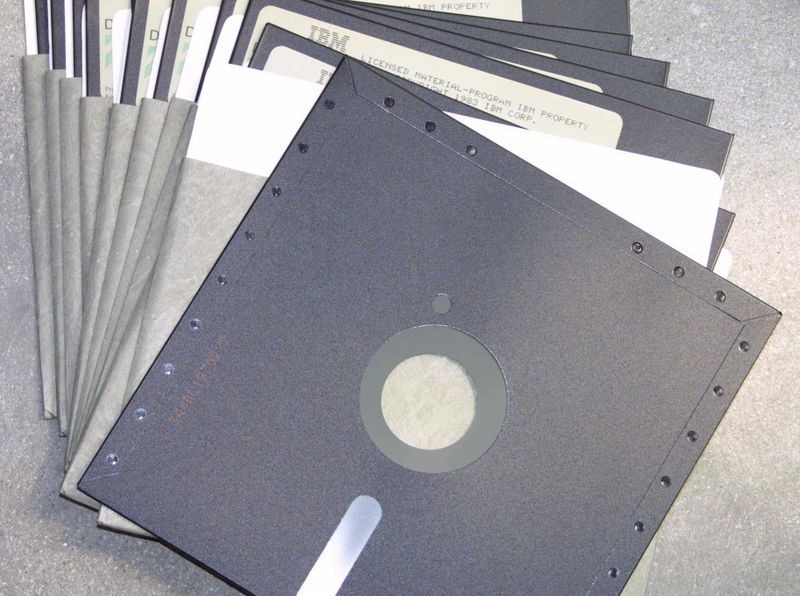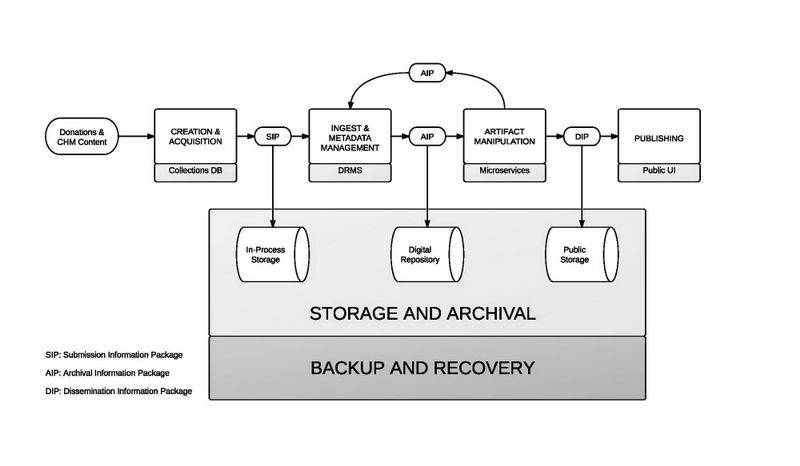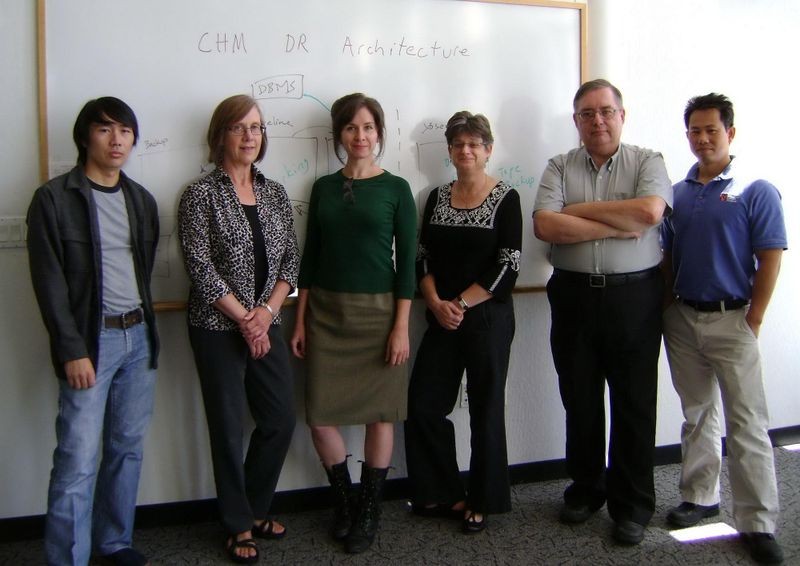

The Computer History Museum had its own mini deluge of historical digital data. Our in-house produced high definition oral histories, lectures, and exhibition videos were usurping our available server space at over 60 terabytes, with another 10 terabytes of historic digital artifacts including images and software. With the aid of grant funds from Google.org, CHM took on the work of creating a prototype digital repository in one year. The digital repository core team is excited about the possibilities the new repository represents for expanding our digital collection while putting the Museum in the forefront of small cultural institutions creating repositories and we hope to share what we have learned with the public and similar organizations.
We needed to find solutions that could be managed by a relatively small organization, yet had the flexibility to preserve our diverse digital content stream. Heading into the year-long project, our assumptions were based on the Museum’s immediate needs andthe understanding that the repository is an on-going commitment of the Museum. Additional assumptions included the use of existing tools and systems including a preservation layer would be built on top of common commodity storage components that are both modular and extensible and that open source software would play a significant part in our infrastructure. These assumptions also meant that no additional staff resources were available to create a custom solution.
At 11 months out, we’ve created critical policy and best practices documents, selected and are implementing the software and storage hardware. We are poised to ingest a small sample set of digital objects to test our prototype.
Step one was confronting the problem head on, followed by engaging in as much preparation as possible. This involved cultivating permanent stakeholders within Museum management and the Board of Trustees. We also made a point of engaging a cross-departmental core team of four digital preservationists.
Once funding was secured the key was having carefully defined objectives delineated by quarter. The first quarter was all about planning. Our first challenge was hiring a digital repository consultant, the ‘authority’ she gave the project in the eyes of the stakeholders was invaluable. Other objectives were creating a concise Project Charter defining scope, objectives, roles, roadmap, and assumptions, surveying the Museum’s digital content with an eye toward preservation needs, and writing a Best Practices Report based on our unique situation.

An early diagram of the proposed CHM Digital Repository Infrastructure.
Quarter’s two and three focused on creating a policy and framework for the repository. Our most important objectives was delving into our digital repository management software needs. This included a user needs survey and writing a functional requirements document followed by a test drive of open source digital repository management software choices. Archivematica is the software champion. We were also engaged in hiring a storage infrastructure consultant while exploring storage options, configurations, and pricing. Finally we completed a repository Policy document.
Our fourth quarter activity is aimed at completing the prototype. This on-going activity involves purchasing, implementing and troubleshooting our DIY storage infrastructure with our firm belief the straightforwardness of the storage infrastructure will guarantee the sustainability of the digital objects entrusted in its care. In October we plan on ingesting test digital objects while creating a procedures manual. And lastly, is acquiring funding for year two. Our aim in the upcoming year is for full deployment with ingest of all digital content and prototyping an on-line interface.
The core team is excited about the possibilities the new digital repository represents for expanding our digital collecting and preservation while putting the Computer History Museum in the forefront of small cultural institutions creating digital repositories.
To those about to embark on solving your data deluge, our three most important factors were setting expectations from the beginning, adequate planning with an emphasis on quarterly results, and having the right team in place that was both dedicated to the project and with the right mix of experience, talents, and abilities. This truly took a team effort.
So you might be wondering what storage infrastructure did we choose and why Archivematica? Please stay tuned to future blog posts where other members of our dedicated and knowledgeable core team will provide details!

Digital Repository core team from left to right: Ton Luong, Katherine Kott, Heather Yager, Paula Jabloner, Al Kossow, and Vinh Quach.
A hearty thanks to all who have worked on the Museum’s digital repository core team for their dedication over the past year.